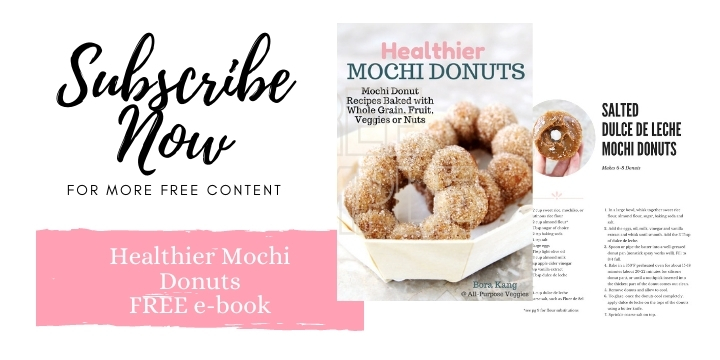
Yogurt has been a part of the human diet for thousands of years. It dates back to 6000 BC, evidenced in Neolithic people using pots to store milk and found that yogurt is a great way to preserve milk. But not until the 20th century, Stamen Grigorov, A Bulgarian medical student, connected the dots and attributed the benefits of consuming yogurt with the lactic acid bacteria.
The finding cemented yogurt’s role in healthy food products all over the world. It’s one of the go-to food products for those wanting to boost their digestive system health, and some even dubbed it to aid in weight loss.
The yogurt craze began in 1904 until today. Numerous different kinds are now available to cater to different tastes and needs, from basic plain yogurt, flavored yogurt, and even non-dairy yogurt for those with lactose intolerance.
But is there any difference in the nutritional value of each yogurt type? Let's read on and find out!

Plain Yogurt
Plain yogurt is a yogurt without added colorants, is a white, thick liquid with a tangy flavor. Basically, it's yogurt without any additional ingredients such as sweeteners, which offers many health benefits without the counter effects of other ingredients such as sugar or additives. It's made with cultured dairy products: fresh milk with starter cultures of beneficial bacteria.
Plain yogurt tastes slightly sour, with a smooth consistency that can vary in thickness. But it's generally sweeter than Greek yogurt. It also has fewer calories and fat compared to Greek yogurt due to the consistency.
Plain yogurt is an excellent source of beneficial bacteria that work wonders for your digestive system. It's also low in fat, making it ideal for weight loss diets. It's also rich in Calcium that aids in bone strength and growth.
You can use this yogurt in baking by adding it into your cake batter to create a very moist cake. The plainness goes with any taste. You can also use plain yogurt as a base for your cake spread, and the good thing is you can add any flavor to it.

Greek Yogurt
Greek yogurt is now more ubiquitous than regular plain yogurt, taking over about 52% of total yogurt sales in the US market. Greek yogurt is essentially plain yogurt that's strained extensively to remove liquid whey, lactose and sugar.
That's why Greek yogurt is much thicker in consistency but less sweet. One of the main differences is also the higher protein and fat contents in Greek yogurt per volume, thanks to its straining during the processing.
Greek yogurt is considered to be more nutrient-dense compared to plain yogurt due to this. The higher protein content means faster cell repair and growth. It's an ideal food for those wanting to build muscle or in a period of recovery. But be mindful of those wanting to lose weight, as this kind packs lots more fat content than plain ones.
Greek yogurt can be used just like how you use plain yogurt. But the difference is the higher protein content can give you more structural integrity in your baked goods. Also, the creaminess can keep your cake, even more moister than plain ones, acidity can replace baking soda, and the thickness in greek yogurt is a better cake garnish/topping than plain yogurt

Coconut Milk Yogurt
Considered one of the newcomers, coconut milk yogurt is now gaining traction thanks to the emerging vegan diet. Making coconut milk yogurt is similar to combining the coconut milk with starter culture and leaving it to incubate for about 24 hours or more for a thicker texture.
Coconut milk yogurt has a touch of sweetness and a gentle coconut flavor instead of plain or Greek yogurt, which has a neutral flavor. The flavor is similar to vanilla, with a very thick texture thanks to the fat in its milk.
In terms of nutrition, coconut milk yogurt is said to aid digestive system health. It also has different minerals and vitamins that can boost your immune system as well. But unfortunately, it doesn't have any Calcium, unlike its previous counterparts.
Coconut milk yogurt can be an excellent substitute for plain and Greek yogurt when you're making vegan Yogurt Cake. It keeps the cake moist and fluffy, with just a hint of vanilla. It can also act as a spread for the cake, but be mindful that it might have a slight coconut taste. So it would be best if you thought about how you can match the flavor with your cake.
You can actually make coconut milk yogurt at home using coconut milk! Here's a recipe that I like

Almond Milk Yogurt
Another vegan alternative to plain and Greek yogurt, almond milk yogurt, is also an excellent addition to the types of yogurt available. Similar to coconut milk yogurt, you only need to add the starter culture to almond milk and wait for at least one day before consuming it.
Almond milk yogurt is slightly brown, with a robust nutty flavor. The texture is much thicker than your regular plain yogurt.
In terms of nutrition, almond milk can be better for you as it has lower sugar content than other types of yogurt mentioned in this list. It also has healthy fats. So it's the perfect food for those wanting to watch their sugar intake or who have diabetes. But just like coconut milk yogurt, one downside is it doesn't have any calcium unless fortified. It can also be an allergen for those suffering from a nut allergy.
Almond milk yogurt holds up as one of the best non-dairy products for baking. It can be added to cake batter for a spongy and moist cake. However, be mindful that it has its own nutty flavor profile that you need to match your baking products.
Here's a great homemade almond milk yogurt recipe if you'd like to make this at home!
Final Take
We’ve discussed different types of yogurt you can use and their health benefits. In general, they’re all good for your gut health and aids in boosting the immune system. It all depends on your needs and taste preferences.
First of all, if you want something with a higher protein content that results in better structural integrity, your best bet is Greek yogurt. But if you want lower fat, you can choose plain yogurt. Next, if you want to bake a cake that's vegan or dairy-free, you have coconut milk or almond milk to choose from. Choose coconut if you want a more vanilla flavor or if you want it to be nut-free. And lastly, go for almond milk yogurt if you want a nutty one.
The possibility is endless now with more yogurt varieties, so go ahead and make your choice!









Leave a Reply